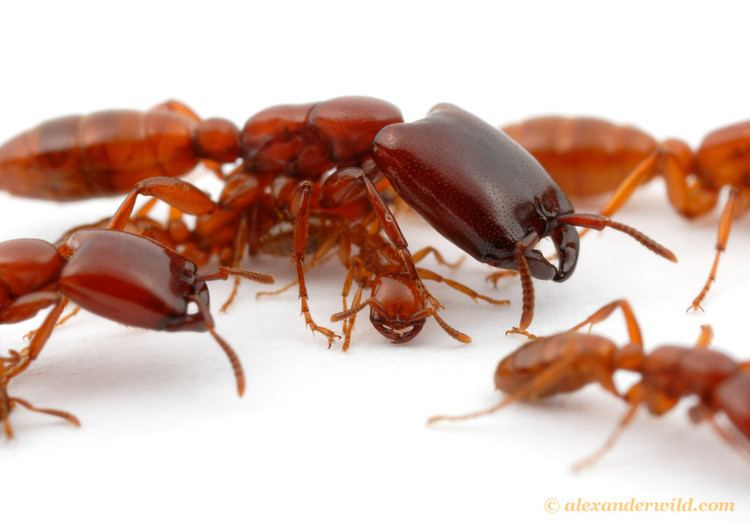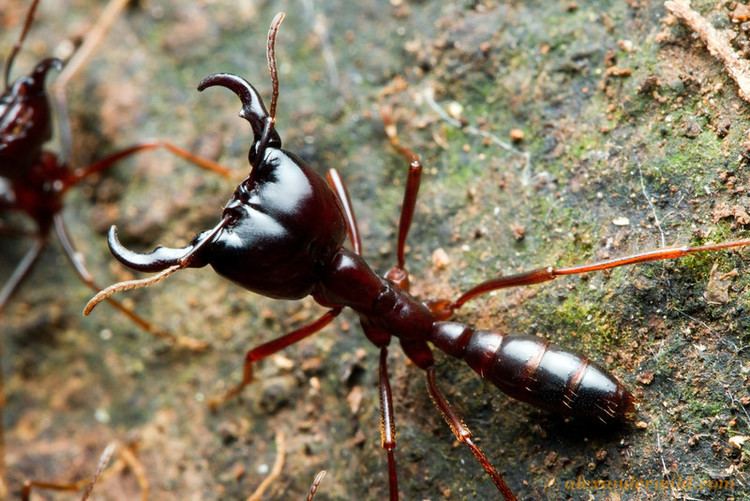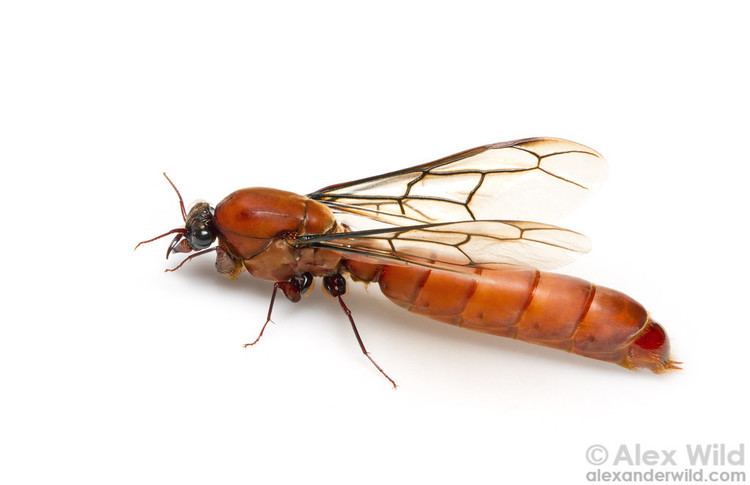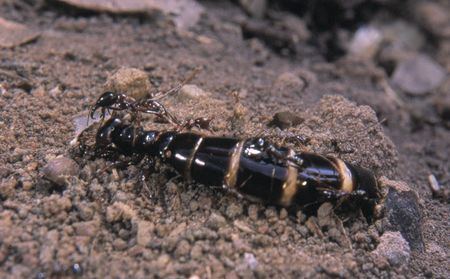Subfamily DorylinaeLeach, 1815 Scientific name Dorylus Rank Genus | Family Formicidae Tribe DoryliniLeach, 1815 Higher classification Army Ants | |
 | ||
Similar Ant, Insect, Army Ants, Eciton, Aenictus | ||
African red ant bite dorylus
Dorylus, also known as driver ants, safari ants, or siafu, is a large genus of army ants found primarily in central and east Africa, although the range also extends to southern Africa and tropical Asia. The term siafu is a loanword from Swahili, and is one of numerous similar words from regional Bantu languages used by indigenous peoples to describe various species of these ants. Unlike the New World members of the former subfamily Ecitoninae (now Dorylinae), members of this genus do form temporary anthills lasting from a few days up to three months. Each colony can contain over 20 million individuals. As with their New World counterparts, there is a soldier class among the workers, which is larger, with a very large head and pincer-like mandibles. They are capable of stinging, but very rarely do so, relying instead on their powerful shearing jaws.
Contents

Life cycle

Seasonally, when food supplies become short, they leave the hill and form marching columns of up to 50,000,000 ants, which are considered a menace to people, though they can be easily avoided; a column can only travel about 20 metres in an hour. It is for those unable to move, or when the columns pass through homes, that there is the greatest risk. Their presence is, conversely, beneficial to certain human communities, such as the Maasai, as they perform a pest prevention service in farming communities, consuming the majority of other crop-pests, from insects to large rats.

The characteristic long columns of ants will fiercely defend themselves against anything that attacks them. Columns are arranged with the smaller ants being flanked by the larger soldier ants. These automatically take up positions as sentries, and set a perimeter corridor in which the smaller ants can run safely. Their bite is severely painful, each soldier leaving two puncture wounds when removed. Removal is difficult, however, as their jaws are extremely strong, and one can pull a soldier ant in two without it releasing its hold. Large numbers of ants can kill small or immobilized animals and eat the flesh. A large part of their diet is earthworms. All Dorylus species are blind, and, like most varieties of ants, communicate primarily through pheromones.

In the mating season, alates (winged drones, queens of real driver-ant species do not grow wings) are formed. The drones are larger than the soldiers and the queens are even larger. Real driver ants do not perform a nuptial flight, but mate on the ground, and the queens go off to establish new colonies. As with most ants, workers and soldiers are sterile (non-reproducing) females.

Male driver ants, sometimes known as "sausage flies" (a term also applied to males of New World ecitonines) due to their bloated, sausage-like abdomens, are among the largest ant morphs, and were originally believed to be members of a different species. Queens are even larger. Males leave the colony soon after hatching, but are drawn to the scent trail left by a column of siafu once they reach sexual maturity. When a colony of driver ants encounters a male, they tear its wings off and carry it back to the nest to be mated with a virgin queen. As with all ants, the males die shortly afterward.After that, the queen ant will lay first eggs. Driver ant queens are able to lay up to 1,000,000 eggs per month.
Such is the strength of the ant's jaws that, in East Africa, they are used as natural, emergency sutures. Various East African indigenous tribal peoples (e.g. Maasai moran), when suffering from a gash in the bush, will use the soldiers to stitch the wound by getting the ants to bite on both sides of the gash, then breaking off the body. This use of ants as makeshift surgical staples creates a seal that can hold for days at a time, and the procedure can be repeated, if necessary, allowing natural healing to commence.
Several species in this genus carry out raids on termitaria, paralysing or killing some of the termites and carting them back to the nest.
Colonies of real driver-ant species have only one queen. When she dies, the surviving workers may try to join another colony, but in other cases, when two colonies of the same driver-ant species meet, they usually change the marching directions to avoid conflicts.
